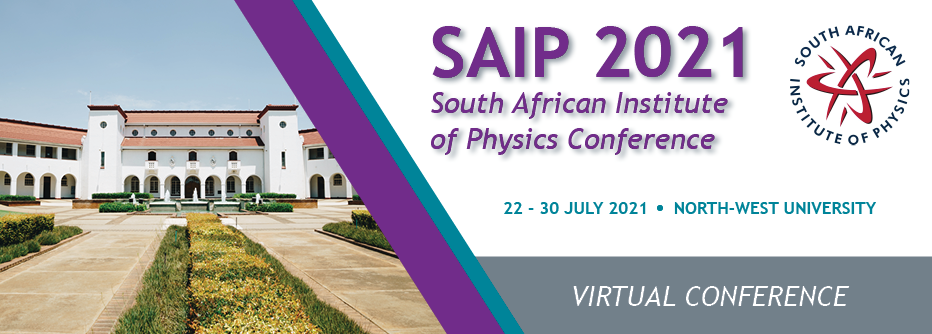Ms
Refilwe Molaeng
(School of Physics, University of the Witwatersrand, Johannesburg, 2050, South Africa., and Department of Subatomic Physics, iThemba LABS, P.O. Box 722, Somerset West 7129, South Africa.)
This study aims to explore the (p,p'$\gamma$) detection capabilities of the K600 magnetic spectrometer coupled to the Ball of Germanium and Lanthanum bromide detectors (BaGeL) at zero degrees at iThemba LABS. This is being done through an investigation into the low-lying dipole strength of $^{58}\mathrm{Ni}$ using the (p,p'$\gamma$) reaction at E$_{\mathrm{p}}$ = 80 MeV. The use of proton inelastic scattering at forward angles favours the electric dipole excitation and thus gives access to the full strength of the pygmy dipole resonance. These probes are, however, less selective with respect to the spin of the excitation, and the energy resolution obtainable with particle spectrometers is far poorer than that of the high-purity germanium detectors used in decay studies following electromagnetic excitation. Performing coincident measurements allows for the separation of nearby excitation, the assignment of multipolarities, the determination of branching ratios and the study of the isospin character of bound states. Results from both (p,p’) and (p,p’$\gamma$) for the low-lying states of $^{58}\mathrm{Ni}$ will be compared to elucidate the advantages of coincidence measurements at iThemba LABS. Important decay paths as well as transition levels will be presented.
Apply to be considered for a student ; award (Yes / No)?
Level for award;(Hons, MSc, PhD, N/A)?
Ms
Refilwe Molaeng
(School of Physics, University of the Witwatersrand, Johannesburg, 2050, South Africa., and Department of Subatomic Physics, iThemba LABS, P.O. Box 722, Somerset West 7129, South Africa.)
Dr
Lindsay Donaldson
(Department of Subatomic Physics, iThemba LABS, P.O. Box 722, Somerset West 7129, South Africa.)
Prof.
Iyabo Usman
(School of Physics, University of the Witwatersrand, Johannesburg, 2050, South Africa.)
Dr
Luna Pellegri
(School of Physics, University of the Witwatersrand, Johannesburg, 2050, South Africa., and Department of Subatomic Physics, iThemba LABS, P.O. Box 722, Somerset West 7129, South Africa.)
A. Bahini
(University of the Witwatersrand)
J.W. Brümmer
(Physics Department, University of Stellenbosch, Matieland, 7602, South Africa.)
H. Jivan
(School of Physics, University of the Witwatersrand, Johannesburg, 2050, South Africa.)
P. Jones
(Department of Subatomic Physics, iThemba LABS, P.O. Box 722, Somerset West 7129, South Africa.)
S. Jongile
(Physics Department, University of Stellenbosch, Matieland, 7602, South Africa.)
K.C.W. Li
(Physics Department, University of Stellenbosch, Matieland, 7602, South Africa.)
R. Neveling
(Department of Subatomic Physics, iThemba LABS, P.O. Box 722, Somerset West 7129, South Africa.)
F.D. Smit
(Department of Subatomic Physics, iThemba LABS, P.O. Box 722, Somerset West 7129, South Africa.)
G.F. Steyn
(Department of Subatomic Physics, iThemba LABS, P.O. Box 722, Somerset West 7129, South Africa.)

